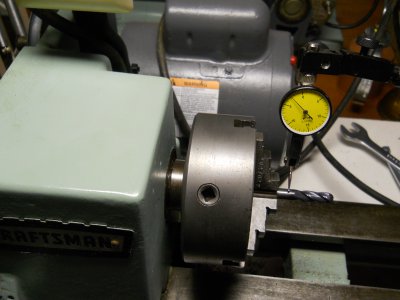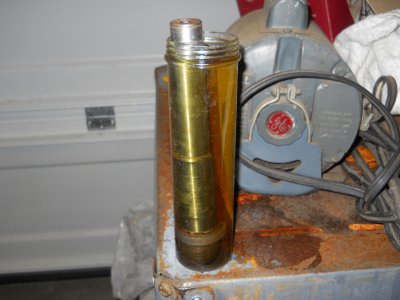- Joined
- Jan 2, 2019
- Messages
- 7,158
When I got my lathe the chuck was really stuck onto the spindle, like days and days of soaking and pounding on it to get it loose. As I've been tooling up I got a keyless drill chuck for the tailstock pretty early on and noticed it wouldn't drill on center in the 3 jaw.
I finally got around to buying a couple of centers so I could align the tailstock and noticed the tailstock was higher than the spindle. I got out a straightedge and confirmed this by clamping it between centers and watched it point towards the headstock. Then I rotated the spindle and it reversed come to find that when I put my tenths indicator on it I'm about 3 tenths out from being concentric.
come to find that when I put my tenths indicator on it I'm about 3 tenths out from being concentric.

Best I can figure is I somehow bent the spindle trying to get the chuck loose, or it was just that bad from the factory.

Well, back when I was trying to free up the chuck I purchased another spindle which I didn't end up using. I now have it soaking in Evaporust to clean up the taper bore and will install it tomorrow. Hopefully it's better because the error is too much to ignore.
John
I finally got around to buying a couple of centers so I could align the tailstock and noticed the tailstock was higher than the spindle. I got out a straightedge and confirmed this by clamping it between centers and watched it point towards the headstock. Then I rotated the spindle and it reversed

Best I can figure is I somehow bent the spindle trying to get the chuck loose, or it was just that bad from the factory.

Well, back when I was trying to free up the chuck I purchased another spindle which I didn't end up using. I now have it soaking in Evaporust to clean up the taper bore and will install it tomorrow. Hopefully it's better because the error is too much to ignore.
John

